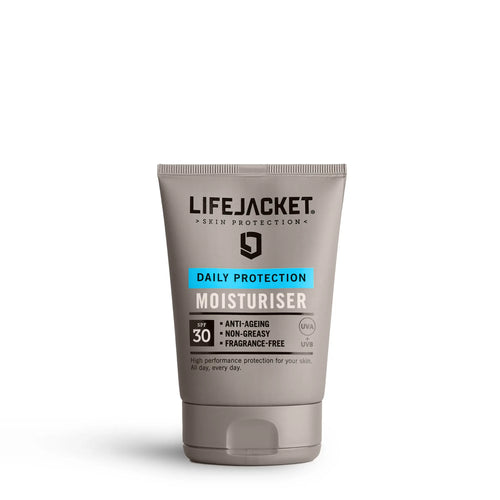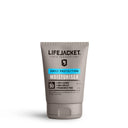There are two types of skin cancer: melanoma and non-melanoma skin cancer.
Melanoma is less common but most lethal.
The two most common non-melanoma skin cancers are Basal Cell Carcinoma (BCC) and Squamous Cell Carcinoma (SCC).
Understanding risk factors
A risk factor is anything that may increase your risk of getting one of these types of skin cancer.
Understanding your own personal risk factors may not only help you avoid getting skin cancer but might also put you in a better position to identify it early, when it's likely to be easier to manage and treat.
Most common skin cancer risk factors
Several risk factors can make you more likely to develop skin cancer. Here are some of the most common ones:
-
UV light exposure - ultraviolet radiation from the sun (or a sun bed) damages skin cell DNA. If it impacts genes that control skin cell growth, that can lead to skin cancer. Skin-damaging, solar UV rays are present all year round, not just in summer. Most of us are therefore at risk here but if you spend a lot of time outdoors for work or pleasure, your risk is greater.
-
Moles - most moles never cause a problem but somebody with a high frequency of moles is more likely to develop melanoma. Beware that 70% of melanomas are new formations on the skin rather than something that develops on an existing mole.
- Lighter skin, hair and eye colour
-
Personal history - if you've had it once, there's a chance you'll get it again. And people who have had non-cancer melanoma are at increased risk of getting melanoma.
-
Weakened immune system - a weakened immune system (caused by another disease or specific medical treatments) can increase the risk of developing many types of skin cancer, including melanoma.
-
Age - while skin cancers can develop in younger people, the risk increases with age (in part, due to longer UV exposure)
-
Being male - in many parts of the world, almost two men die of skin cancer for every woman according to World Health Organisation data.
-
Family history - read on...
Family history
Today's LifeJournal is specifically about the role of genetics and family when it comes to skin cancer.
Clearly, you can’t control your genetic makeup. Certain traits passed down from your biological parents can put you at greater risk of getting skin cancer, in particular, your physical traits. As mentioned, high frequency of moles and lighter skin, hair and eye colour can be risk factors. But there’s a little more to it than just physical attributes.
The presence of very specific types of genes that have nothing to do with appearance, can also increase your susceptibility to the different types of skin cancer. For example, the PTCH1/PTCH2 genes can increase susceptibility to Basal Cell Carcinoma by altering certain processes in your skin.
Finally, there are also behavioural factors at play. Far less scientific than the ‘PTCH1 gene’, families tend to spend time doing the same things together. They share a common lifestyle - anything from going to Florida every year to surfing in Cornwall each summer or working outdoors on a farm. That joint and collective exposure to UV may impact various members of the same family.
Studies attempting to actually put a number on the percentage risk are unclear. There are so many variables at play making it very difficult to identify causation specifically. Given how lethal melanoma is, it has been researched the most and American scientists suggest the inherited risk is 8%. So, nearly 1 in 10 people will get melanoma if it’s in their immediate family. That’s not as small a number as it might seem.
What’s clear is that through the combination of genetically passed-down physical traits, lifestyle and the possible inheritance of specific genes, the risk is probably not zero.
What should you do if a family member has or had skin cancer
If a close relative has been diagnosed with skin cancer, see that as a good reason to be more mindful. There’s no need to fret or panic that you’re at significantly higher risk but for all the reasons mentioned, the risk factor is likely to be elevated.
If you haven’t already, make an appointment with a medical professional and do a full-body skin check. Try to do that at least once a year. In between your annual check, you should be particularly vigilant and keep an eye on your skin. If you see suspicious moles, new growths, bumps, lumps or lesions, contact your GP or the dermatologist who did your last skin check.
Never go on a sun bed (again). It’s quite simple.
And finally, be proactive about protecting your skin. Use an SPF moisturiser every single day. When you’re outside for long periods of time - especially under strong sun - re-apply, re-apply, re-apply. Try to find shade, wear a hat and get your hands on some UPF clothing. All things you probably know but now it’s actually time to listen and take action.
*****
Professor Christian Aldridge is a Consultant Dermatologist at Prince Charles Hospital. He's a specialist in skin cancer and melanoma management, member of the British Association of Dermatologists, the British Society of Dermatological Surgery and the American Academy of Dermatology. Finally, Professor Aldridge is LifeJacket's scientific adviser and prepared this important article for us.






